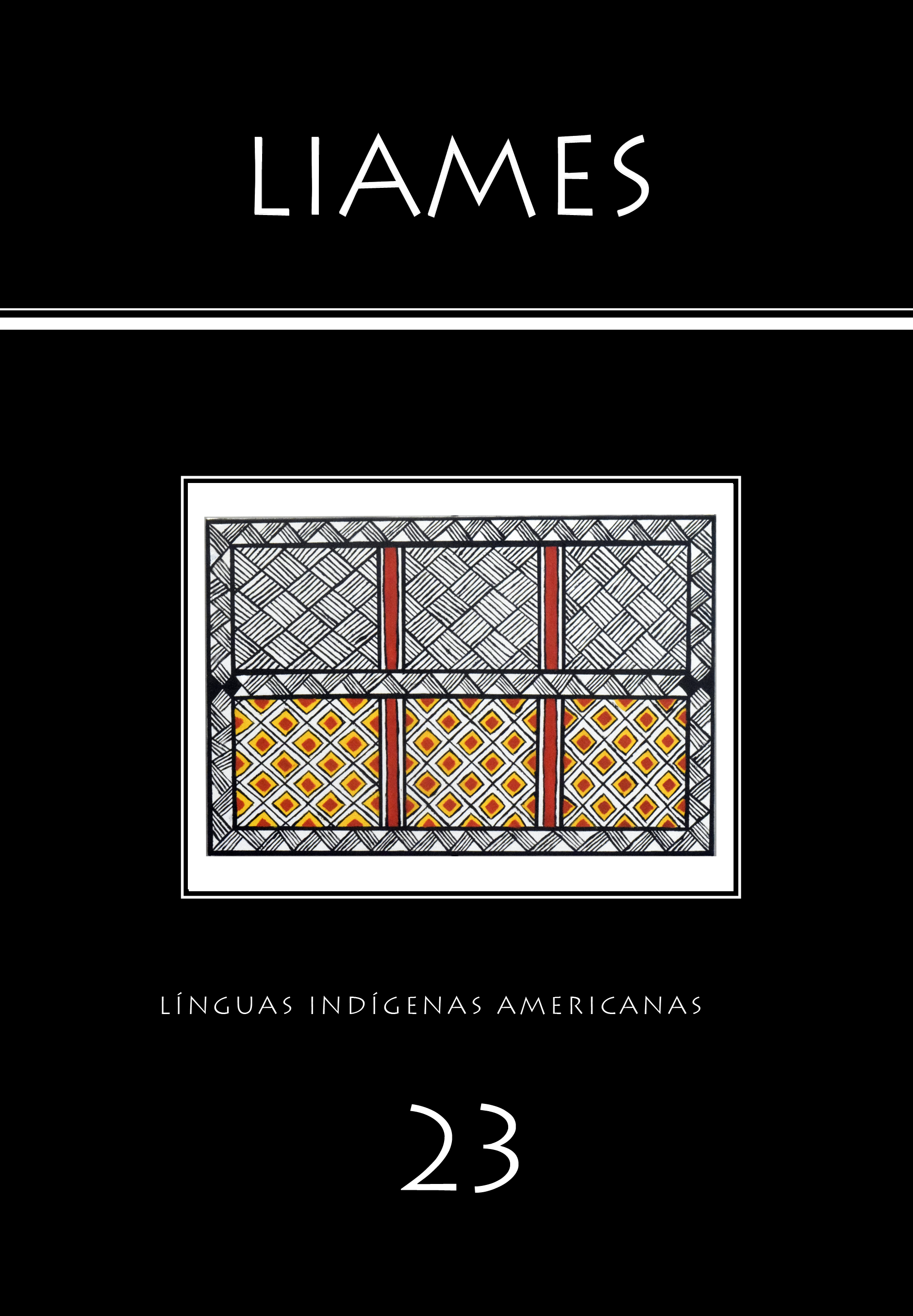Abstract
: In the Guyanese highlands, there are traces of a probable linguistic exogamy that can be detected between the Aparais and the Wayanas. Each of these groups speaks their own languages as well as other languages of neighboring indigenous groups, in addition to the national language of the country where they live. Such linguistic dynamic is partly due to interethnic sociability networks that, for various reasons, led groups to cohabit, forming a larger group within which the distinction between them seems to have been geographic and linguistic. Different testimonies hint that, in the past, these networks of ethnic sociability networks were amalgamated by a linguistic exogamy, persisting even today, but in a flexible way, and also opening these relations beyond the Cariban ethnic sphere. The present study proposes a review of some of these ethnic sociability relationships, with the paternal language as ethnic identity among the Aparais and Wayanas. Some situations of linguistic resilience are discussed.
References
Barbosa, Gabriel Coutinho (2009). Os Aparai e Wayana e suas redes de intercâmbio (Tese de doutorado). Universidade de São Paulo. https://doi.org/10.11606/T.8.2008.tde-27112009-104126
Barbosa, Gabriel Coutinho (2011). Festas, guerras e trocas entre os Aparai e Wayana meridionais. Revista de Antropologia 54 (2): 829-855. https://doi.org/10.11606/2179-0892.ra.2011.39647
Camargo, Eliane (1997). Identidade étnica, identidade linguística: o bilinguismo entre os Wayana e os Aparai. Multilinguismo em foco. Estudos da linguagem: limites e espaços. Mesas-Redondas do VI Congresso da ASSEL. Rio de Janeiro: UFRJ. pp. 89-99.
Camargo, Eliane (2007). Lieu et langue: paramètres d’identification et d’attribution du Soi et de l’Autre en wayana (caribe). Léglise, I & B. Migge (eds.), Attitudes et représentations linguistiques en Guyane. Regards croisés. Paris, Éditons de l’IRD, pp. 225-250.
Camargo, Eliane (2008). Identidade e alteridade em wayana. Uma contribuição linguística. Campos 9(2): 105-137. Disponível em: https://revistas.ufpr.br/campos/article/view/15865
Camargo, Eliane (2023). Le Wayana au bout de la langue. Phonologie. Paris : Ipê Editions. (no prelo)
Damien, Davy; Tritsch, Isabelle; Grenand, Pierre (2012). Construction et restructuration territoriale chez les Wayãpi et Teko de la commune de Camopi, Guyane française. Confins. Revue franco-brésilienne de géographie, N. 16. https://doi.org/10.4000/confins.7964 https://journals.openedition.org/confins/7964?lang=pt
Dreyfus, Simone (1992). Les réseaux politiques indigènes em Guyane occidentale et leurs transformation sau XVIIe et XVIIIe siècles. Homme 122-124: 75-98. https://www.persee.fr/doc/hom_0439-4216_1992_num_32_122_369525.
Frikel, Protássio (1958). Classificação linguístico-etnológica das tribos indígenas do Pará setentrional e zonas adjacentes. Revista de Antropologia, 6(2): 113-189. https://doi.org/10.11606/2179-0892.ra.1958.110384
Gallois, Dominique (1986). Migração, guerra e comércio: Os Waiãpi na Guiana. Universidade de São Paulo. https://repositorio.usp.br/item/000768870
Gomez-Imbert, Elsa (1991). Force des langues vernaculaires en situation d'exogamie linguistique: le cas du Vaupés colombien, Nord-Ouest amazonien. Cahiers des Sciences Humaines 27: 535-559. Disponível em: https://www.documentation.ird.fr/hor/fdi:35827
Gomez-Imbert, Elsa (1993). Problemas en torno a la comparación de las lenguas tucano-orientales. In María Luisa Rodríguez de Montes (ed.), Estado actual de la clasificación de las lenguas indígenas de Colombia, pp. 235-268.Instituto Caro y Cuervo.
Gomez-Imbert, Elsa (1996). When animals become "rounded" and "feminine": conceptual categories and linguistic classification in a multilingual setting. In John. J. Gumperz & Stephen C. Levinson (eds.), Rethinking linguistic relativity, pp. 438-469. Cambridge University Press.
Gomez-Imbert, Elsa (1999). Variétés tonales sur fond d’exogamie linguistique. Cahiers de Grammaire 24. Phonologie : théorie et variation. pp. 67-93. http://w3.erss.univ-tlse2.fr/textes/publications/CDG/24/CG24-5-Gomez.pdf
Grupioni, Maria Denise F. (2005). Tempo e espaço na Guiana Indígena. In Dominique Gallois (org.), Redes de relações nas Guianas. Humanitas/Fapesp/NHII-USP. pp. 23-57. Disponível em: https://repositorio.usp.br/item/002191427
Hurault, Jean Marcel (1968). Les Indiens Wayana de la Guyane française: structure sociale et coutume familiale. ORSTOM.
Lapointe, Jean (1971). Residence patterns and Wayana social organization. Columbia University Microfilme, Ann Arbor: Columbia Univers., n. 1971-17-516.
Leblond, Jean-Baptiste 1813 (1789). Description abregée de la Guyane Françoise. s. ed. Paris.
Morgado, Paula (1994). O pluralismo médico Wayana-Aparai: Uma experiência Intercultural (Dissertação de mestrado). Universidade de São Paulo.
Morgado, Paula (1999). Os sentidos da missão Wayana Aparai. In: Robin M. Wright (org.), Transformando os Deuses: os múltiplos sentidos da conversão entre os povos indígenas no Brasil, pp. 217-254. Editora Unicamp/FAPESP.
Morgado, Paula (2003). Os Wayana e os viajantes: Construindo imagens em mão dupla. (Tese de Doutorado). Universidade de São Paulo.
Patris, Jean-Baptiste (1767). Relations abregées d'un voyage fait dans l’intérieur de la Guyane Française en remontant l'Oyapock, le Camopi et en descendarnt le Maroni. Paris.
Schoepf, Daniel (1972). Historique et situation actuelle des indiens Wayana-Aparai du Brésil. Bulletin du Musée d’Ethnographie de Genèv, 5: 33-64.
Sorensen, Arthur P. Jr. (1967). Multilingualism in the Northwest Amazon. American Anthropologist 69(6): 670-684. Disponível em: https://www.jstor.org/stable/669671
Stenzel, Kristine (2005). Multilingualism in the Northwest Amazon, Revisited. Memorias del Congreso de idiomas indígenas de Latinoamérica-II. 27-29 de octubre de 2005. University of Texas at Austin. Disponível em: https://www.academia.edu/3492385/Multilingualism_in_the_Northwest_Amazon_Revisited
Tony, Claude (1843). Voyage fait dans l'intérieur du continent de la Guyane chez les lndiens Roucouyens en 1769. Nouvelles Annales de Voyage (Paris) 1: 213-35 (4 s., 4 années.).
van Velthem, Lucia Hussak (1998). A pele de Tuluperê: uma etnografia dos trançados dos Wayana. Museu Paraense Emílio Goeldi.

This work is licensed under a Creative Commons Attribution-NonCommercial 4.0 International License.
Copyright (c) 2023 Eliane Camargo


